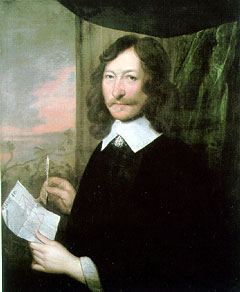 |
| A Walpurgis Night bonfire |
Walpurgisnacht
Tonight is Walpurgis Night, or Walpurgisnacht if you're Germanic-inclined. (I just like the sound of it.) It's the eve before Beltane, and, like Halloween, is a time of year when the boundaries between this world and the spirit world are said to be especially thin. It's a time of the turning between seasons, was celebrated by the ancient pagans, and is still celebrated today. Coming between spring and summer, it's not quite one thing or another, and anything can happen.You may wonder how such a pagan holiday came to be named after a Christian saint. It happened for the usual reason: it gave you a chance to celebrate the day and the Church authorities would still leave you alone. Sometimes. In about the 16th or 17th century, the notion arose of Walpurgis Night being a time when witches' sabbats were held, and that would almost always get you into trouble.
The real Saint Walpurga was an English missionary to the Frankish empire, the sister of Saint Willibald and Saint Winibald, the daughter of Saint Richard the Pilgrim, and the niece of Saint Boniface. With Boniface, she evangelized to the German pagans. She was also well-educated, and wrote accounts of her brothers' lives, making her perhaps the first known English (and German) female author.
One of the traditions of Walpurgisnaught is the lighting of giant bonfires, supposedly to keep the evil spirits at bay. There may be a more practical reason for the fires, as well. Walpurgis season, in northern European areas, was when the livestock was first let out to graze in the countryside, and the fires were an efficient way of keeping wolves and o
 |
| William Lilly |
William Lilly's Birthday, 1602
William Lilly was a famed astrologer of the 17th century. His most famous work, Christian Astrology, was printed in 1647 and has never gone completely out of print. He got himself into a lot of trouble by predicting the Great Fire of London 14 years before it happened, but was found innocent of starting it in his trial before Parliament.Lilly's ancestors had been yeoman for several generations, and he managed to get a basic classical education. When he was 17, his father fell on hard times and William could no longer continue in school. He went to London, where he was hired as a clerk and attendant for an elderly couple. Seven years later the gentleman died, leaving Lilly an inheritance of £20. Soon after that, Lilly married the man's widow, Ellen, who died a few years later, leaving him an inheritance of £1000.
Lilly began to study astrology, and also started paying attention to the world of rulers and politics. He made quite a reputation for himself with his predictions, published widely, and got himself noticed by the great men of the day. He had set himself up as a professional astrologer, taking as many as 2000 questions a year, and also privately advised Cromwell and his supporters. He was also consulted by the Royalists, although Charles, suspecting his motives, declined to take his advice.
When Charles II returned to power, Lilly was in a bit of trouble, but thanks to help from friends in high places, he was pardoned. In 1661 he pledged his loyalty to the King -- an act for which he paid a fee of £13 6s 3d. After that, he led a relatively quiet, low-profile life.
Lilly married twice more after Ellen's death. His second wife was named Jane, and the marriage was very unhappy. Lilly said it was because Jane was "of the nature of Mars." She died in 1654, and Lilly married again, to Ruth, who was of a more compatible astrological aspect.
Lilly is regarded today as one of the masters of horary astrology, a branch in which the astrologer attempts to answer a question by drawing a chart based on the time the question was asked. He was the author of the first astrology book written in English (rather than Latin). The republication of a facsimile edition of Christian Astrology in 1985 brought about a revival of interest in the field that continues today.
 |
| Wax museum replica of LeVey. Photo by Fernando de Sousa. |
Church of Satan Established, 1966
While I'm on the occult theme, I might as well tell you about the Church of Satan, which was established in San Francisco on Walpurgis Night, 1966. The Church was founded by writer, musician, and occultist Anton LeVey.The Church of Satan does not worship the devil, or, in fact, believe in him or in any other supernatural deities. They use the word "Satan" in what they say is its original, Hebrew context: an "adversary", or questioner. The Church promotes rational, materialistic, and individualistic goals. Among the Satanic Sins are: stupidity, self-deceit, herd conformity, and lack of aesthetics.
Since the Church of Satan does not release information on its membership figures, it is unknown how many members there actually are. They don't solicit membership, either, but you can become a Registered Member for a fee of $200 (assuming you're legally classified as an adult in the nation in which you live.) In order to become a first-degree Active Member, you have to participate in the Church and answer an examination. Admission to higher degrees is by invitation only.
Anton LeVey died in 1997. The Church is currently headed by High Priest and Priestess Peter H. Gilmore and Peggy Nadramia, and the headquarters is now located in Hell's Kitchen, New York City.
No comments:
Post a Comment